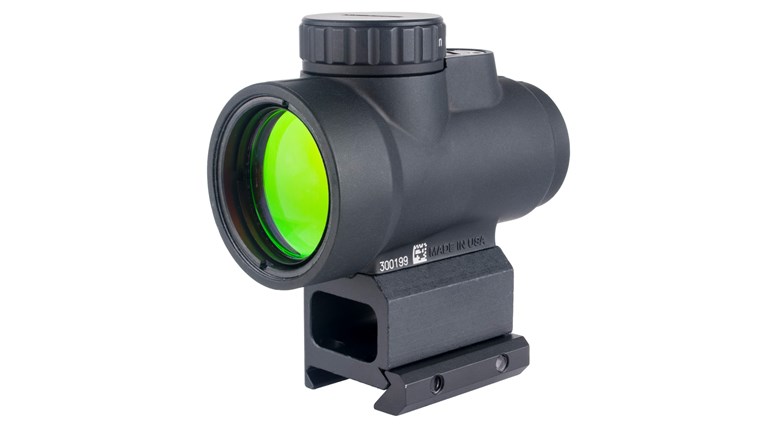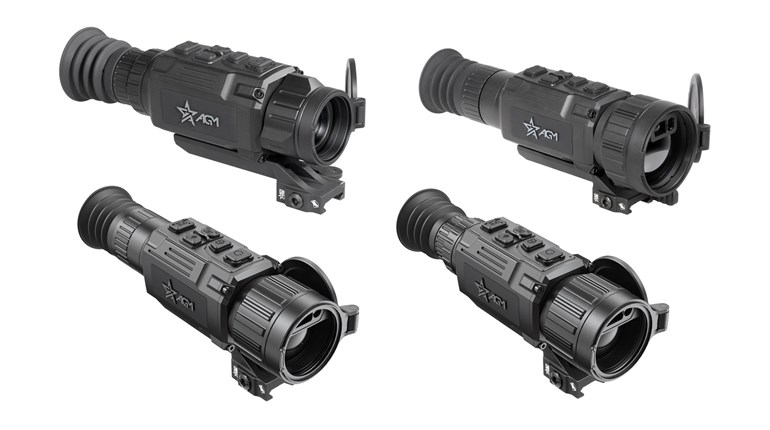
Night vision and thermal units are two tools hunters are increasingly using when hunting after hours (where legal). And while the equipment is fast becoming a skeleton key for after-hours success—as I learned firsthand while in Texas on a predator hunt—users need to be aware of the function and limitations of such devices in order to get the most from them in a hunting situation. Night Optics USA product development manager Ben Bainter gave me a rundown on a few things to take note of regarding the two types of optical enhancement used on our nightly predator hunts.

What is Night Vision?
Before we delve into the finer points of night vision, it helps to know what it is and how it works. Simply put, night vision allows the human eye to see objects at night. Night-vision units do this by gathering ambient light not visible to the human eye, such as infrared light, and convert it into a form of visible light we can see via the optic. As for types of night-vision units, there are several options available, including monocular, binocular, goggles and gun-mounted optics. I used multiple units while in Texas, including Night Optics’ Krystal 950 Brilliance 4 Gated Clip-on Night Vision Sight, a gun-mounted optic used in tandem with a riflescope that gives the scope night-vision capabilities, and the Sentry 14 1x Brilliance 3 Gated Night Vision Monocular.
Avoid Too Much Light Exposure
Night-vision units can be incredibly temperamental regarding light transmission. While scopes are an optic in which hunters can never seem to get enough light, night vision is essentially designed to run in the darkest situations possible.
Bainter compares light exposure to redlining an engine. “Infrequent, brief exposure to lights for a few seconds is not going to destroy the device because Night Optics utilizes auto-gating and high light shut off in most devices, but it’s like redlining your vehicle; you can only do it so many times before it will cause damage or reduce life expectancy.”
Infrared (IR), for those unversed, is a form of light human eyes and animal eyes cannot detect, as it exists outside their visible light spectrum ranges. This makes it ideal for night-vision applications. Bainter likened it to a flashlight beam that can only be seen with night vision. On that note, he also explained if an IR illumination source is too bright, it can washout objects at close ranges just like normal light. While this doesn’t necessarily harm the unit as it would with visible light, it can render night vision useless in the field.

Practice for Adjustments in the Dark
Bainter emphasizes how crucial training is while using night vision, stating that it’s not good enough to simply train with the unit during the day. Since you’ll have to operate by feel in the dark, it’s best to familiarize yourself with your gear at night when you can’t see what you’re doing. This becomes particularly important when making adjustments to accommodate for varying distances, adjusting zoom or changing the color profile during a nighttime hunt.
Maintain Eye Relief
Not only is your vision limited in distance when using night-vision devices, but your peripheral vision is severely hampered, too, meaning you’ve got to be even more situationally aware. Safety is of the utmost importance on a nighttime hunt. Limited visibility decreases your situational awareness, increasing the chances for an accidental muzzle sweep, or worse.
How much of a vision change are we talking about? Bainter says peripheral vision can be reduced by much as 60 percent. With that in mind, it’s important to keep the unit away from your eye socket, much like a scope, as the limited field of view means you’re more likely to bump into something. If you’ve got space between your eyes and the device, you’re in the clear, as the unit has some give. If not? Let’s just say your eyes will have some blue with that black.
Train Your Eyes
Lastly, because you’re straining the muscles in your eyes to pick up movement while looking through an unnatural filtered set of lenses, Bainter recommends “exercising” your eyes to getting used to the changes you’ll experience when looking through a night-vision unit. He suggests starting off your first few hunts with 30 minutes behind the optic, then 30 minutes off, increasing usage by 15 minutes or so after that to avoid headaches and straining your vision.

What Are Thermal Optics?
We didn’t use night vision alone on our Texas predator hunt; Bainter also brought the company’s SVTS-640 Long-Range Thermal Riflescope. Because thermal optics operate differently than night vision, different rules apply. Rather than gathering light and channeling it into an optic to improve vision, thermal optics pick up heat signatures from objects and project the different temperature signatures as different colors across a color scale.
Sight-In Tips
Sighting the rifle in with thermal optics can be a hassle for several reasons. First is the problem of detecting a heat signature from a paper target. When zeroing, Bainter suggests using a pie tin or cooking pan as a target, as the metal will show a different heat signature in the optic compared to the surrounding temperature. He noted that calibration, or the refresh rate of the thermal sensors creating the image seen in the optic, can make sighting in thermals a pain, too.
Continuous calibration—which is a feature found on Night Optic’s SVTS-640—helps reduce the delay time, making sighting in easier. However, you can also use a manual freeze function to easily zero the unit. To do this, aim at the target’s center, fire a round, freeze the image and adjust the crosshairs to your projectile’s impact. On other thermal optics without continuous calibration, simply don’t shoot if the unit freezes and wait for a second or two as it attempts to recalibrate.
Identify Your Target
Bainter emphasized that thermal optics, unlike night vision, don’t function as a detailed imaging tool. Shades of color, for example, don’t appear on thermals like they do with night vision, simply because thermal works off of heat, not light reflection.
“One of the worst things that can happen is accidentally shooting Lassie because you didn’t take the extra time to recognize the target was a domestic dog versus a coyote. Recognizing a hog versus a deer when using thermal is not difficult, but it does take time to notice the body movement differences,” he said.
In other words, don’t use thermals for target identification. While the resolution capabilities of thermal units are getting better, the image quality is still not detailed enough to clearly identify targets.


































